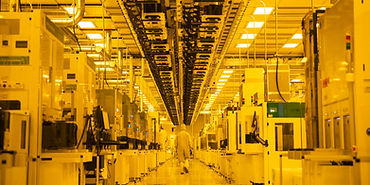By: Samuel Lin
US chip companies are beginning construction on silicon chip fabs, or factories, to get the U.S. back into the chip industry. The Biden administration has incentivized US companies to increase chip production to improve US economic security.
Intel, a world leader in chip production, has announced plans to build a 1000-acre factory near Columbus, Ohio in September. Intel will spend up to $20 billion building these new fabs.
Micron followed suit in October, stating that it would spend up to $100 billion over the next 20 years to build the largest fab in the US near Syracuse. The chip factories will create 50,000 new jobs.
Other companies such as Samsung and Taiwan Semiconductor Manufacturing Company (TSMC) are building factories in Texas and Arizona, respectively. A total of 35 US chip factories have planned on building new fabs.
The mania of building new chip factories has happened after the Biden administration introduced the CHIPS and Science Act. The CHIPS and Science Act allocated $39 billion dollars to incetivize building fabs, allotted other money for training chip workers, and provided funding to boost US chip production.
“It [the CHIPS Act] really does put us in the game for the first time in decades,” said John Neuffer, CEO of the Semiconductor Industry Association (SIA).
President BIden also believed the CHIPS Act could “bring more of their [the tech company’s] supply chain home.”
During the pandemic, US companies had to import a lot of chips from other countries, such as Taiwan, which currently produces 65% of the world’s semiconductor chips and 90% of advanced chips. This is compared to the meager 10% of chips made in the US. To increase competition with Asian countries and to improve US economic stability, the US government is providing new incentives for building chip factories.
However, this may not close the gap between US and Taiwan chip production. These new fabs could take years to build, and some companies may quit building if they don’t find it profitable. In addition, there is a lack of workers who are skillful enough to work in the fabs.
Experts believe that the US will still rely on Taiwan to import the most powerful chips, and that the US cannot become self-sufficient.
US chip production is “not going to try or succeed in accomplishing self-sufficiency,” said Chris Miller, who wrote a recent book on the chip industry titled Chip War: The Fight for the World’s Most Critical Technology.
Sources:
https://www.nytimes.com/2023/01/01/technology/us











